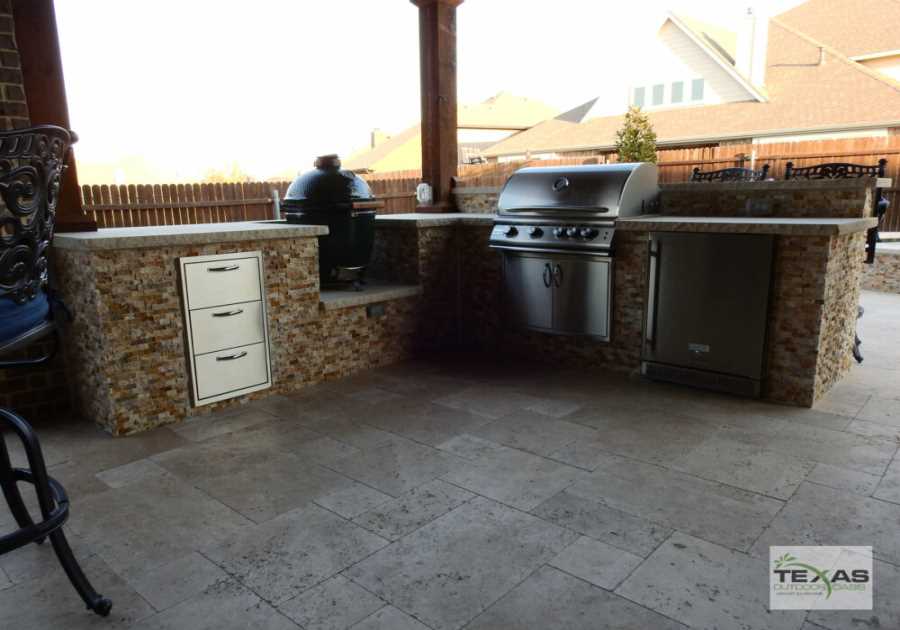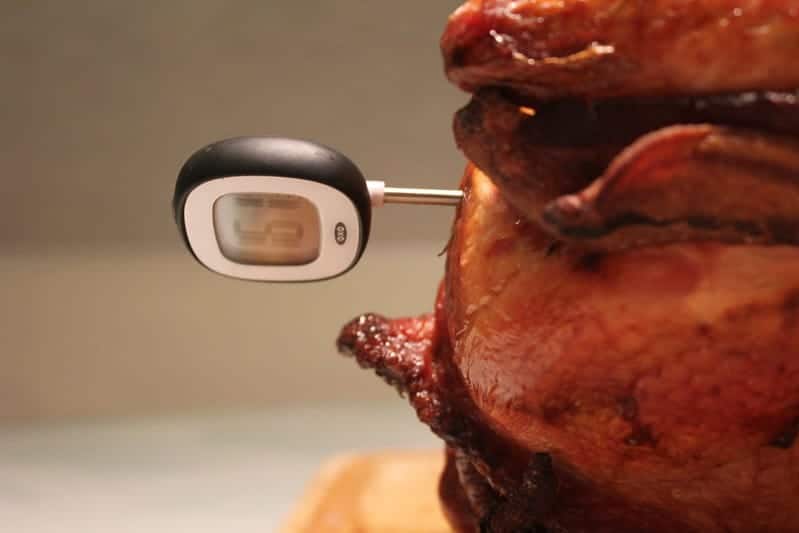
Image Courtesy to Christina Xu
Smoking and grilling a large turkey can be challenging to get right, especially if you’ve never cooked one before. While whole turkeys are traditionally eaten in homes around the US for the Thanksgiving and Christmas holidays, people regularly complain about the texture of the meat. Due to a whole turkey’s size and fears over food poisoning from undercooked meat, amateur cooks tend to overcook it, causing it to dry out.
Although you can get accustomed to cooking a turkey through experience, it’s best to ensure safety by using a thermometer. Temperature and timing are critical when it comes to producing the most succulent and flavorsome turkey. Here’s a look at the importance of temperature and how to use a thermometer when cooking turkey.
1. The Importance of Temperature When Cooking Turkey
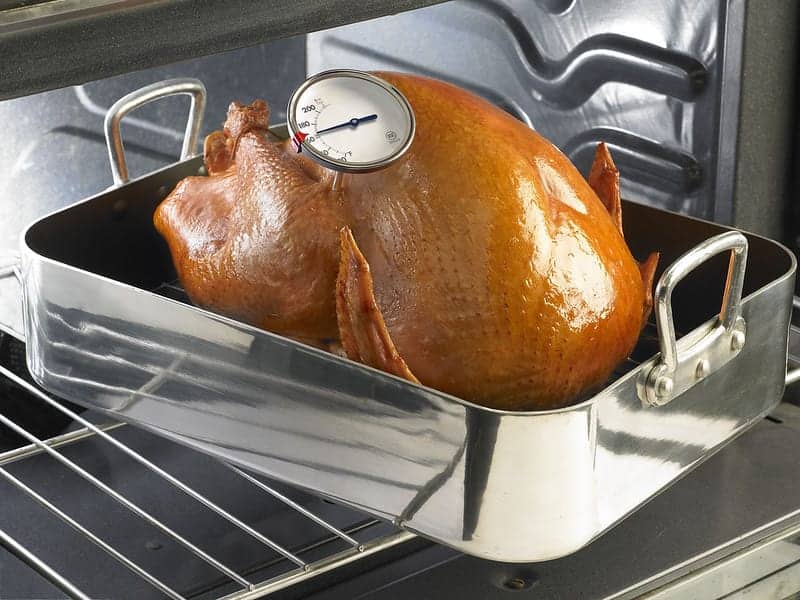
Depending on the recipe, turkey food preparation has many steps, but generally it comes down to knowing the spices to inject the meat and making sure it’s cooked at the right temperature.
Most fresh foods have recommended temperatures for storage and cooking. This helps to ensure they’re kept safe and healthy to eat. Temperature control reduces the growth of potentially harmful hazards and pathogens. Storing and cooking foods at the right temperature can also improve the flavor when it comes time to eat it.
The CDC reports mishandling and incorrectly cooking turkey as some of the most common issues that cause poultry-based foodborne illnesses. The first step in maintaining a safe temperature for turkey is the thawing out process. Turkey should be given enough time to thaw out at a safe temperature.
You must avoid letting the temperature reach between 40°F and 140°F as this is the “danger zone” where bacteria is most likely to grow. The refrigerator is the safest place to let your turkey thaw out. Leaving it on a tray at room temperature can be very dangerous.
Another safety aspect often overlooked by cooks is cooking turkey stuffing. Stuffing can easily become contaminated during preparation. If the center point of the stuffing doesn’t reach 165°F, bacteria may survive, leading to food poisoning. It can be beneficial to cook stuffing on a separate dish from the turkey. If you still love the flavor that the turkey adds to your stuffing, remove the stuffing when the turkey is cooling and place it in a casserole dish and cook for 30 additional minutes.
When cooking the turkey, you must first preheat the oven to at least 325°F. Depending on the weight of the turkey, it will require a specific amount of cooking time. However, one of the most critical factors is checking the internal temperature to make sure it is safe. Use a thermometer to confirm that it reached 165°F.
Once fully cooked, let the turkey stand. Giving the meat a chance to rest allows it to cook for an extra few minutes. The moisture re-absorbs, making the meat more tender.
2. Where to Put the Meat Thermometer?
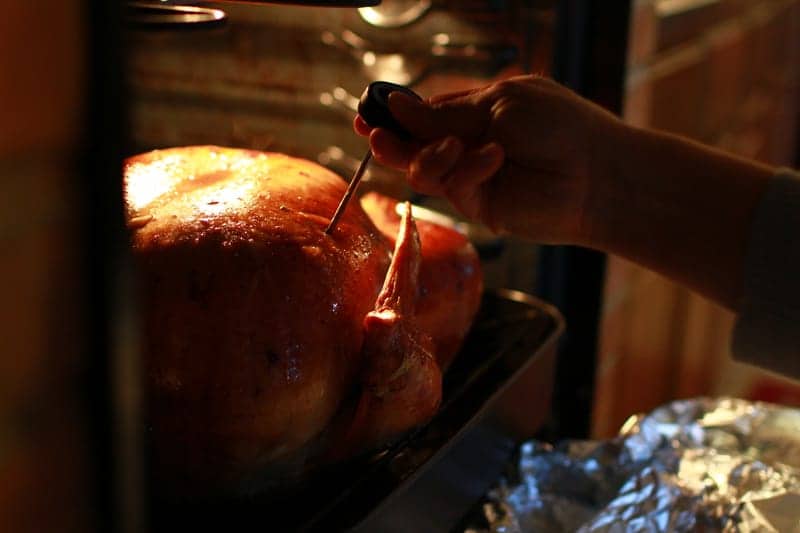
Image Courtesy to Chris Waits
Where to put the meat thermometer in turkey is an integral part of the process. It should be inserted into the meat’s thickest parts: the breast, the thigh, and the inner wing. Ensure that the thermometer is placed into the fleshiest portion of these areas.
Avoid touching any bone or gristle when taking the temperature as it distorts the reading. It’s also important not to let the thermometer touch the cooking tray or pan that the turkey is in. The thick parts of a turkey are generally relatively lean, meaning they are ideal for gauging the temperature.
It’s important to check the temperature of multiple areas of the bird due to cooking speeds. Each of these sections contains the most meat, but they also cook at different rates. Just because one of these areas has reached 165°F, it doesn’t necessarily indicate the whole turkey has cooked through. Checking each of these areas’ temperatures can be the difference in producing an undercooked, succulent, or overcooked turkey.
If you’re not cooking a whole turkey, the internal temperature is even easier to gauge. For a turkey breast, leg, or ground patty, insert the thermometer to the side of the piece for a more accurate reading.
For measuring the temperature of the turkey stuffing, insert the thermometer into the very center of it. The safe internal temperature of turkey and stuffing is 165°F.
If you don’t have a leave-in thermometer, you may have to check the temperature several times throughout the cooking process, starting 30-45 minutes before the turkey is due to come out of the oven. Just make sure your oven doesn’t lose too much heat when you’re removing and replacing the turkey.
3. Assess the Accuracy of Your Oven
The oven’s functionality also has a significant impact on safe cooking. It’s common for the temperature gauge of an oven to lose accuracy over time. This is mainly due to the thermometer’s location and an oven’s temperature cycling.
It’s essential to check the accuracy of the oven temperature and the state of the thermostat. In most cases, inaccuracies can be rectified by recalibration. A temperature deviation of as little as 25°F can affect the cooking trajectory, causing you to under or overcook the turkey.
Testing the temperature accuracy is relatively simple, as long as you have a reliable thermometer. A meat thermometer with a probe is an ideal tool for testing. Here are the key steps:
4. Types of Thermometers
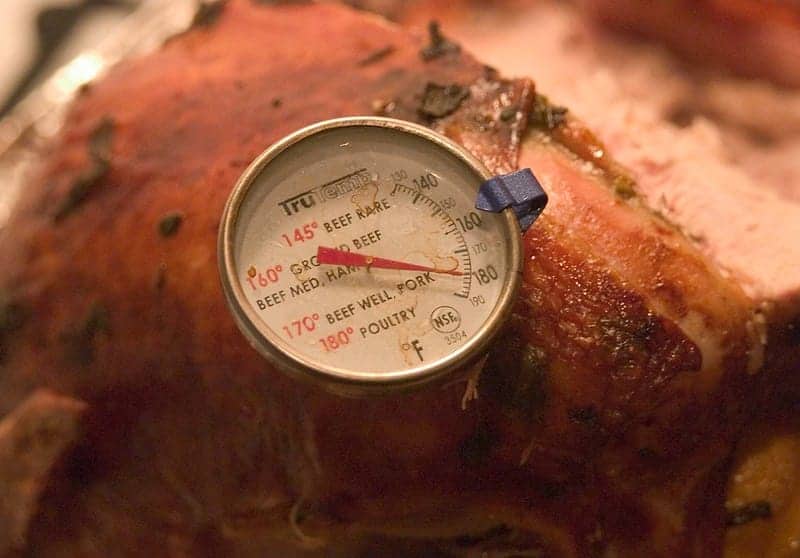
Image Courtesy to Fiat luxe
Although it is critical to determine where to put a meat thermometer in turkey, you also need to find the most suitable thermometer types. The best models are those with probes. These can easily penetrate the flesh and give you a fast and accurate internal temperature reading. Other useful thermometers include:
- Oven-proof thermometers
- Pop-Up Thermometers
- Thermocouples
- Thermistors
- Disposable temperature indicators
Food thermometersmust be cleaned carefullyafter each reading to ensure safe use. This can be done using water, alcohol, white vinegar, or soap. Read the instructions carefully before cleaning in case there are device-specific sterilization recommendations.
5. Cook Safely for Family and Friends
Taking a safety-first approach and regularly monitoring your food’s temperature not only eliminates the risk of food poisoning but can also contribute to tastier food. When cooking for friends and family, the flavor is important, but safety should be a priority.
Invest in a quality food thermometer and learn to cook a turkey perfectly. Do all the necessary preparation, and remember that a safe internal temperature for turkey is 165°F.








